The wonders – and mysteries – of Kuiper Belt object 2014 MU69 continue to multiply as NASA’s New Horizons spacecraft beams home new images of its New Year’s Day 2019 flyby target.
This image, taken during the historic Jan. 1 flyby of what’s informally known as Ultima Thule, is the clearest view yet of this remarkable, ancient object in the far reaches of the solar system – and the first small “KBO” ever explored by a spacecraft.
Obtained with the wide-angle Multicolor Visible Imaging Camera (MVIC) component of New Horizons’ Ralph instrument, this image was taken when the KBO was 4,200 miles (6,700 kilometers) from the spacecraft, at 05:26 UT (12:26 a.m. EST) on Jan. 1 – just seven minutes before closest approach. With an original resolution of 440 feet (135 meters) per pixel, the image was stored in the spacecraft’s data memory and transmitted to Earth on Jan. 18-19. Scientists then sharpened the image to enhance fine detail. (This process – known as deconvolution – also amplifies the graininess of the image when viewed at high contrast.)
The oblique lighting of this image reveals new topographic details along the day/night boundary, or terminator, near the top. These details include numerous small pits up to about 0.4 miles (0.7 kilometers) in diameter. The large circular feature, about 4 miles (7 kilometers) across, on the smaller of the two lobes, also appears to be a deep depression. Not clear is whether these pits are impact craters or features resulting from other processes, such as “collapse pits” or the ancient venting of volatile materials.
Both lobes also show many intriguing light and dark patterns of unknown origin, which may reveal clues about how this body was assembled during the formation of the solar system 4.5 billion years ago. One of the most striking of these is the bright “collar” separating the two lobes.
“This new image is starting to reveal differences in the geologic character of the two lobes of Ultima Thule, and is presenting us with new mysteries as well,” said Principal Investigator Alan Stern, of the Southwest Research Institute in Boulder, Colorado. “Over the next month there will be better color and better resolution images that we hope will help unravel the many mysteries of Ultima Thule.”
New Horizons is approximately 4.13 billion miles (6.64 billion kilometers) from Earth, operating normally and speeding away from the Sun (and Ultima Thule) at more than 31,500 miles (50,700 kilometers) per hour. At that distance, a radio signal reaches Earth six hours and nine minutes after leaving the spacecraft.

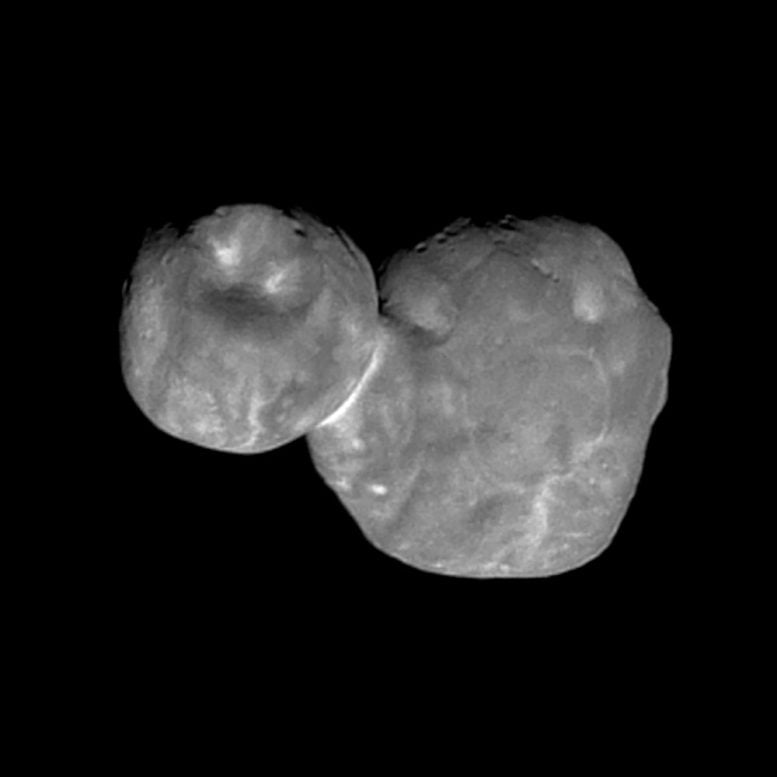
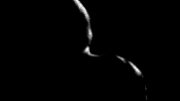
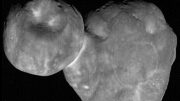
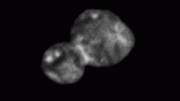
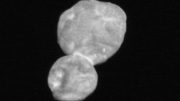
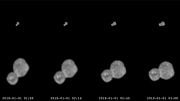
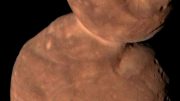
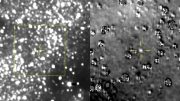
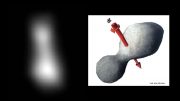
looks like an embryo ??